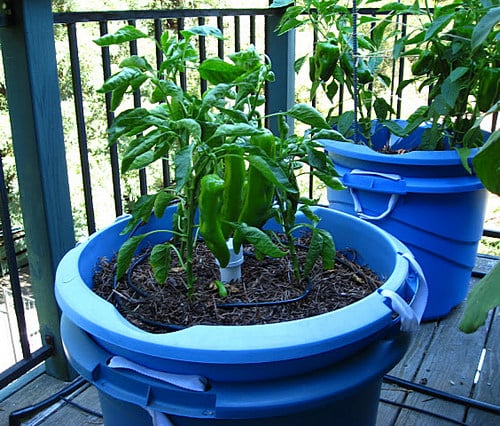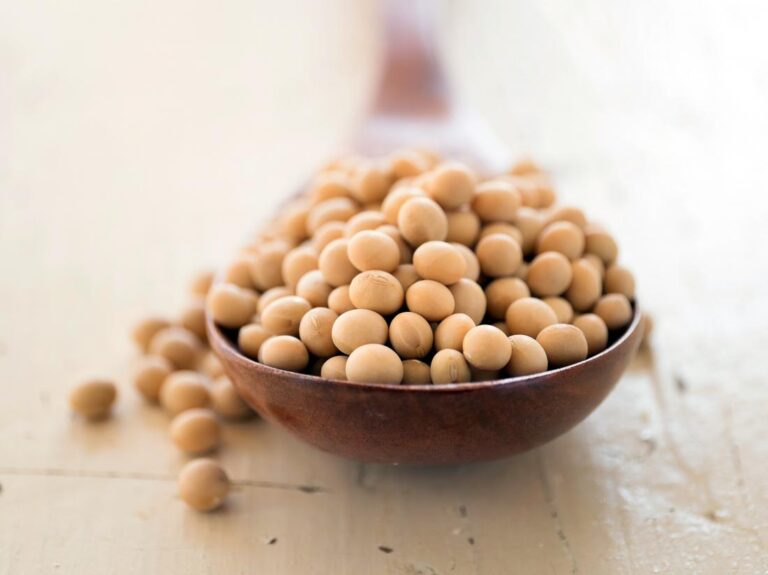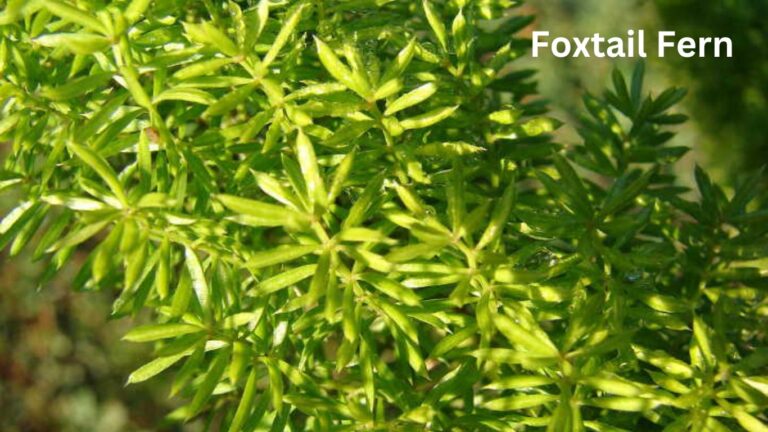Safe Plastics for Gardening: How to Choose and Use Them
Hey there, green thumbs! Ever wondered about the plastics lurking in your garden? You’re not alone. With environmental concerns on the rise, it’s crucial to pick the right materials, especially when it comes to nurturing your precious plants. From raised beds to containers, the choices seem endless.
But fear not! In this blog, we’ll dive into the world of safe plastics for gardening, guiding you through the maze of options with clarity and ease. Whether you’re a seasoned pro or just starting out, knowing which plastics to trust can make all the difference. So, let’s dig in and uncover the secrets to a greener, safer garden!
Table of Contents
Evaluating the Plastic’s Durability and Longevity
Evaluating the durability and longevity of plastic materials is crucial when selecting the right ones for gardening applications. Gardeners need plastics that can withstand the demands of outdoor environments and continue to perform well over time.
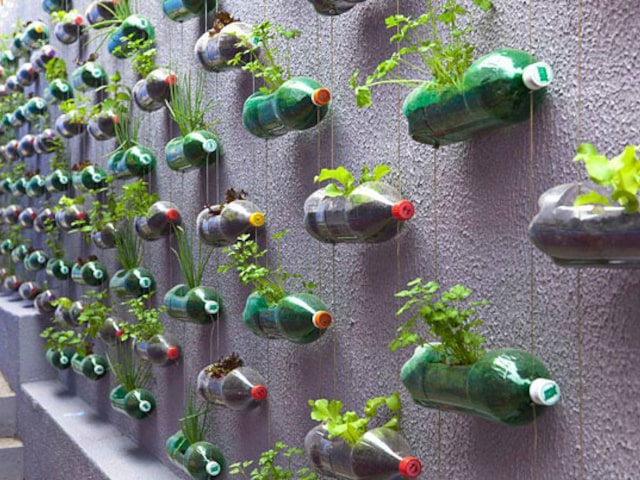
- UV Resistance: Begin by selecting plastics that are explicitly labeled as UV resistant. These plastics are formulated to withstand the harmful effects of sunlight exposure without becoming brittle or discolored over time.
- Strength Evaluation: Assess the overall strength of the plastic by considering various factors:
- Tensile Strength: Look for plastics with high tensile strength, which indicates their ability to withstand stretching and tension without breaking.
- Impact Resistance: Check for plastics with good impact resistance, as they can endure accidental impacts without cracking or shattering, ensuring their longevity in outdoor settings.
- Flexibility: Evaluate the flexibility of the plastic, as it plays a crucial role in adapting to different gardening needs:
- Adaptability: Opt for plastics that offer flexibility, allowing them to bend or shape according to specific gardening structures or containers.
By thoroughly evaluating the durability and longevity of plastics, gardeners can make informed decisions and select materials that will withstand the rigors of outdoor environments and serve their gardening needs effectively.
Considering the Plastic’s Resistance to UV Rays and Outdoor Elements
When considering the plastic’s resistance to UV rays and outdoor elements, it is crucial to choose materials that can withstand prolonged sun exposure and harsh weather conditions. UV rays from the sun can accelerate the degradation of certain plastics, causing them to become brittle, discolored, and prone to cracking over time.
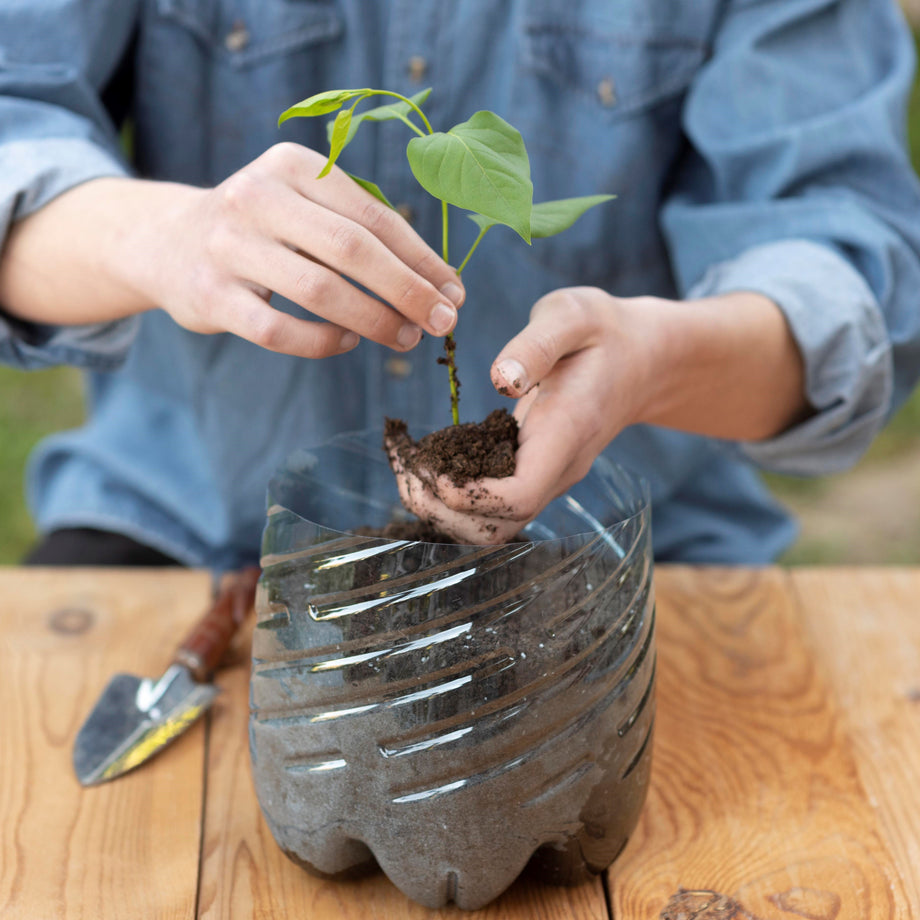
- Acrylic (PMMA): Acrylic is a transparent thermoplastic material known for its UV resistance. It is commonly used in light fixtures, window frames, retail displays, decorative panels, outdoor signage, and colored lenses. While it offers good UV protection, it’s somewhat brittle and not ideal for high-pressure or impact-heavy applications.
- Polycarbonate: Polycarbonate is a more durable and rigid alternative to acrylic. It has excellent UV resistance, making it suitable for heavy-duty applications like lenses, helmets, safety windows, and containers. It’s also 200 times stronger than glass and can withstand extreme temperature .
- PTFE (Polytetrafluoroethylene): PTFE is another UV-resistant material with good weathering resistance. It has low friction, flexibility, and exceptional chemical resistance. While not as common in gardening, it’s worth considering for specific applications.
- HDPE (High-Density Polyethylene): HDPE is resistant to UV radiation and moisture absorption. It’s commonly used in mulch films, groundcovers, and other outdoor applications. Its durability and long-lasting properties make it suitable for garden use.
Remember to assess other factors like strength, transparency, and resistance to moisture and chemicals when selecting plastics for your garden. Proper care and choosing the right materials will help your garden materials withstand outdoor conditions effectively.
Examining the Plastic’s Flexibility and Adaptability to Different Gardening Needs
When it comes to selecting plastic materials for gardening, flexibility and adaptability are key factors to consider. Different gardening needs require different types of plastic that can mold and adjust accordingly. One such type is polyethylene, which is well-known for its versatility and ability to meet varying gardening demands.

- Flexibility: Polyethylene plastic offers excellent flexibility, making it easy to shape and mold into various forms to suit your gardening needs.
- Customization: Whether you require a protective cover for young plants or a liner for a raised bed, polyethylene can be molded and customized to fit your specific requirements.
- Adaptability: Its flexibility extends to different gardening techniques, such as hydroponics or container gardening, allowing it to be formed to fit various setups.
- Durability and Resistance: Polyethylene plastic is highly durable and resistant to common gardening challenges, ensuring its longevity and reliability.
- Moisture Resistance: It can withstand exposure to moisture, preventing degradation and maintaining its integrity over time.
- Temperature Fluctuations: Polyethylene remains stable even in fluctuating temperatures, safeguarding your garden against extreme weather conditions.
- Handling: Despite frequent handling, polyethylene retains its shape and strength, making it a dependable choice for long-term gardening projects.
Whether you’re constructing a greenhouse or creating a protective tunnel for season extension, polyethylene plastic provides the necessary combination of flexibility and adaptability to meet your gardening needs.
Safe Plastics for Various Gardening Applications
Plastics offer a wide range of applications in gardening, providing convenience, durability, and versatility. When it comes to choosing safe plastics for various gardening applications, it is crucial to consider the specific needs and requirements of each task.
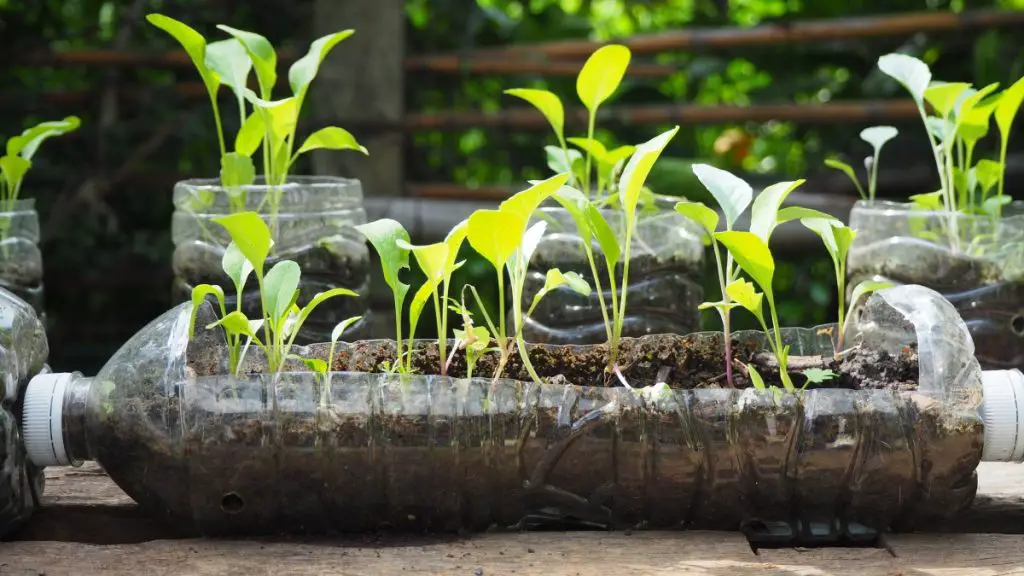
Raised Bed Construction:
- Materials for Raised Beds:
- High-Density Polyethylene (HDPE): HDPE is durable, rot-resistant, and environmentally friendly. It’s commonly used for raised bed frames.
- Recycled Plastic Lumber: Made from recycled plastics, this material is sturdy and sustainable.
- Size and Depth:
- The suitable size and depth depend on what you plan to grow. Generally, 30cm (1ft) depth works for bulbs, salad leaves, and strawberries, while fruit bushes and small trees need 45cm (18in) or more.
- Orientation and Aspect:
- Position beds in south- or west-facing areas for full sun exposure.
- Run long beds north to south for even sunlight levels.
Safe Plastic Containers for Container Gardening:
- Materials:
- Terracotta: Non-toxic and traditional.
- Ceramic: Durable and aesthetically pleasing.
- Plastic (Polypropylene or Polyethylene): Choose food-grade plastics with drainage holes to prevent root rot.
- UV-Stabilized Plastics:
- Protect containers from sunlight damage.
- Ensure longevity for outdoor use.
Providing a stable environment for plants while minimizing harm to the environment is paramount in this type of gardening.
Selecting Safe Plastics for Raised Bed Construction
When selecting safe plastics for raised bed construction, it is crucial to consider their durability and longevity. The plastic material should be able to withstand the demands of outdoor gardening, including exposure to moisture, temperature fluctuations, and the weight of soil and plants.
Choose plastics specifically engineered for outdoor use and raised bed construction.
Look for materials with high impact resistance to withstand wear and tear.
Exposure to sunlight can degrade plastics over time.
Opt for UV-stabilized plastics to prevent brittleness, discoloration, and loss of structural integrity.
UV-stable plastics are designed to withstand prolonged sun exposure.
Evaluate resistance to rot, mold, and pests.
Prioritize materials that contribute to sustainable gardening practices.
By carefully evaluating the plastic’s resistance to UV rays and outdoor elements, you can ensure that your raised beds are built to last.
| Plastic Type | Considerations |
|---|---|
| HDPE (High-Density Polyethylene) | – Considered food-grade. |
| – Durable and UV-resistant. | |
| – Does not leach harmful chemicals into the soil. | |
| LDPE (Low-Density Polyethylene) | – Generally safe for raised beds. |
| – Flexible and resistant to cracking. | |
| Polypropylene | – Commonly used in food containers. |
| – Good resistance to chemicals and moisture. | |
| Recycled Plastic Lumber | – Derived from recycled plastics, often HDPE. |
| – Ensure the recycled material is food-grade. | |
| Avoid PVC (Polyvinyl Chloride) | – Not recommended; may contain harmful additives like lead and phthalates. |
| – Avoid for applications involving food production. | |
| Check for BPA-Free Labeling | – Look for BPA-free labeling when using plastic containers or liners. |
| Consider Local Regulations | – Be aware of and comply with local regulations regarding the use of plastics in gardening. |
Ensure that the selected plastic material meets your specific needs and adheres to any regulations in your area. Always prioritize the safety of your garden and the health of plants grown in raised beds.
Choosing Safe Plastic Pots and Containers for Container Gardening
When it comes to container gardening, choosing the right pots and containers is crucial for the health and success of your plants. In particular, selecting safe plastic options can provide numerous benefits. Safe plastic pots and containers are lightweight, durable, and offer excellent moisture retention properties. These qualities make them ideal for maintaining a healthy root system and preventing overwatering.
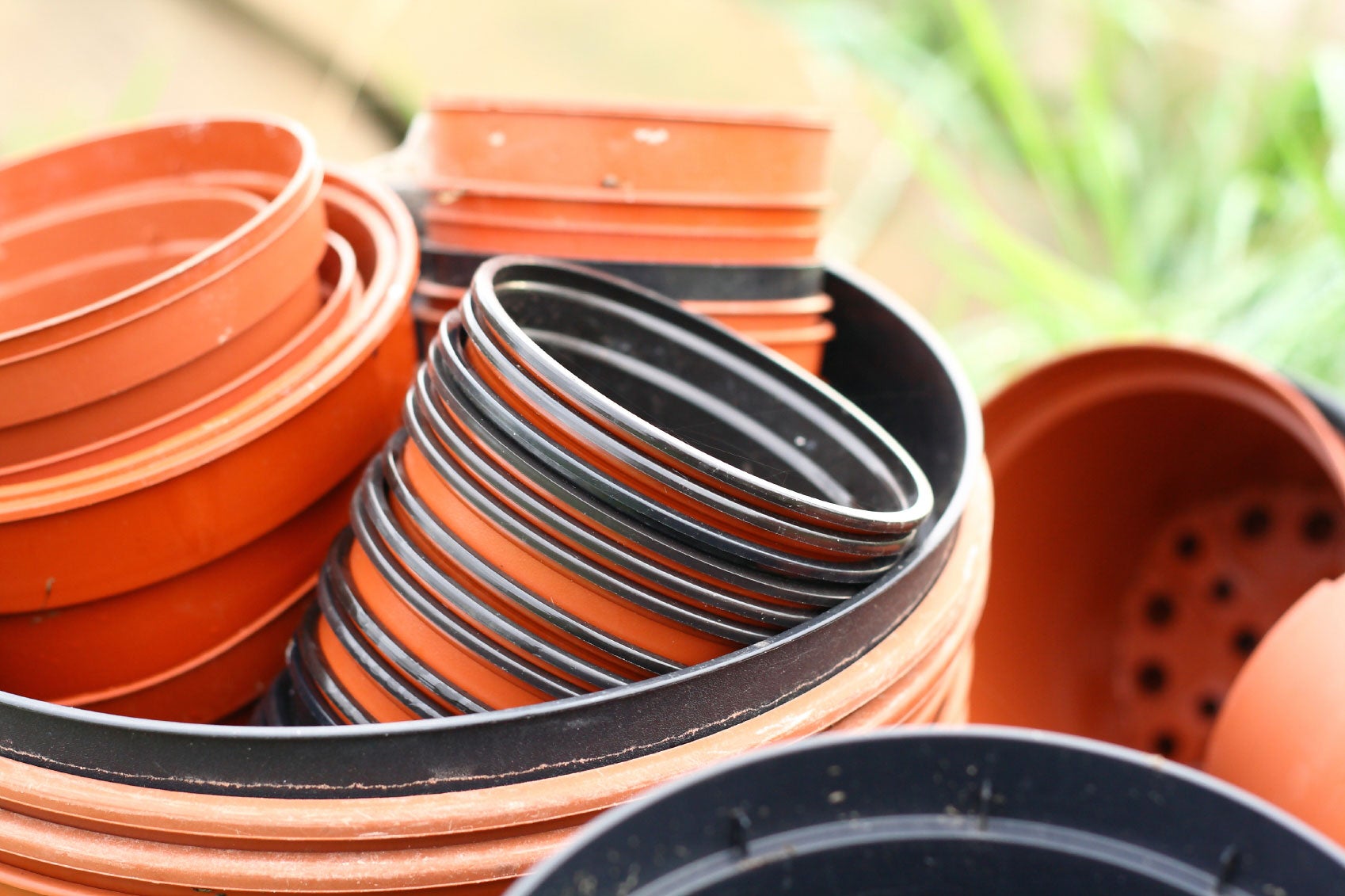
- BPA-Free: Choose pots and containers that are labeled as BPA-free. BPA (bisphenol A) is a chemical commonly found in plastics and can be harmful to both humans and plants.
- Food-Grade Plastic: Look for containers specifically labeled as food-grade plastic. These have undergone testing and are considered safe for use with food and plants.
- Avoid Recycled Plastics: Steer clear of containers made from recycled plastics. They may contain residues or chemicals that could leach into the soil and harm your plants.
By following these guidelines, you’ll create a safe environment for your plants to thrive in your container garden! 🌱🌼
Opting for Safe Plastic Mulch and Groundcovers
Plastic mulch and groundcovers can be beneficial additions to any garden, helping to suppress weeds, conserve moisture, and protect the soil from erosion. However, it is important to choose safe plastics that are free from harmful chemicals and toxins.
- Check for BPA-Free Label: Look for products that are labeled as BPA-free. This ensures that the plastic does not contain bisphenol A, a chemical that can potentially leach into the soil and harm plants and surrounding ecosystems.
- Opt for High-Density Polyethylene (HDPE): Choose plastic mulch and groundcovers made from high-density polyethylene (HDPE), a durable and environmentally friendly material. HDPE is known for its strength and resistance to environmental factors, making it a reliable choice for gardening applications.
- Ensure Agricultural or Horticultural Use: Select plastic mulch and groundcovers that are specifically designed for agricultural or horticultural use. These products are more likely to meet safety standards and have undergone testing to ensure their suitability for gardening purposes.
- Choose Reputable Manufacturers and Suppliers: Purchase products from reputable manufacturers and suppliers. This ensures that the materials have undergone rigorous testing and quality control measures, giving you peace of mind about their safety and reliability.
Remember to always follow the manufacturer’s instructions for installation and disposal to minimize any potential negative impact on the environment.
Having incorporated Agfabric Landscape Fabric into my gardening endeavors, I can attest to its efficacy in weed control and durability. The UV-stabilized design ensures long-lasting performance, protecting against sun damage and maintaining its effectiveness over time. Its water-permeable nature allows for proper moisture penetration while thwarting weed growth, creating an ideal environment for plant growth.
Though initial installation may require effort, its versatility and eco-friendly composition make it a valuable addition to any garden. Overall, Agfabric Landscape Fabric has proven to be a reliable solution for weed suppression and soil protection, contributing to healthier and more vibrant landscapes.
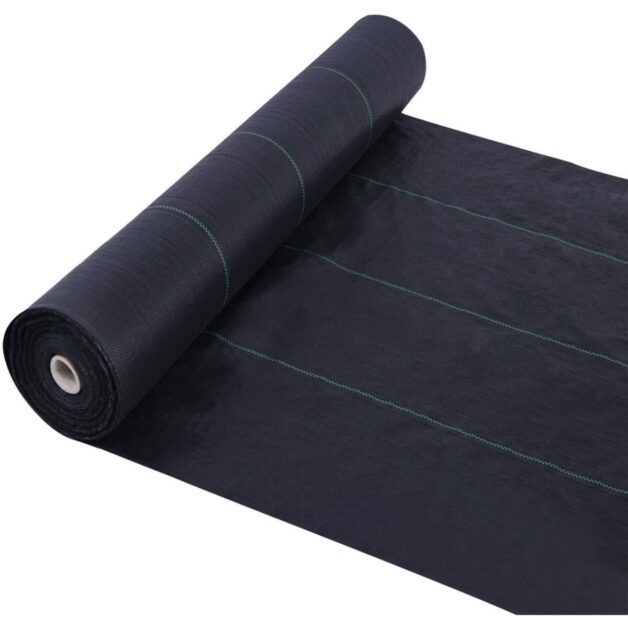
✅ UV Stabilized: The UV-stabilized design ensures durability and longevity, protecting the fabric from sun damage and maintaining its effectiveness over time.
✅ Water Permeable: Despite its weed-blocking properties, the fabric is permeable to water, allowing moisture to reach the soil and plants while preventing waterlogging.
✅ Easy Installation: Designed for user convenience, this fabric is easy to install and can be cut to fit various garden sizes and shapes.
✅ Versatile Use: Suitable for a wide range of landscaping applications, including flower beds, vegetable gardens, pathways, and more.
✅ Environmentally Friendly: Made from environmentally friendly materials, this fabric is safe for use in organic gardening practices and minimizes the need for chemical weed control methods.
❌ Limited Aesthetic Appeal: While effective, the fabric may not provide the same aesthetic appeal as natural mulch or decorative stones.
❌ Requires Maintenance: Over time, the fabric may require maintenance to ensure proper installation and effectiveness, such as repositioning or patching.
❌ Potential for Soil Compaction: In areas with heavy foot traffic, the fabric may contribute to soil compaction if not properly installed or maintained.
❌ Not Suitable for All Plants: Some plants may not thrive as well when grown in conjunction with landscape fabric, as their roots may struggle to penetrate the barrier.
❌ Environmental Impact: While the fabric is environmentally friendly, disposal options should be considered at the end of its lifespan to minimize environmental impact.
Utilizing Safe Plastic Netting and Fencing for Plant Protection
When it comes to protecting your plants from unwanted pests and critters, utilizing safe plastic netting and fencing can be a game-changer for your garden. These materials provide a physical barrier that prevents pests from accessing your plants, helping to safeguard your hard-earned produce.
- Durability: Safe plastic netting and fencing are crafted from high-quality plastics, ensuring durability and longevity.
- These materials are resistant to breaking, tearing, and degradation, making them ideal for outdoor use.
- Their durability provides a long-lasting solution for plant protection, offering peace of mind that your plants are safe and secure.
- Versatility: Safe plastic netting and fencing offer a versatile solution for various gardening needs.
- They are available in different sizes and mesh configurations, allowing customization based on specific requirements.
- Whether you need to keep out birds, rabbits, or larger animals, you can find the right netting or fencing to suit your needs.
- Tailored Protection: The different sizes and mesh configurations enable you to tailor the level of protection to your garden’s specific requirements.
- Whether you’re protecting berry bushes from birds or creating a barrier against larger animals, safe plastic netting and fencing offer customizable solutions.
- Flexibility and Adaptability: The flexibility and adaptability of these materials make them an excellent choice for gardeners.
- They can be easily installed and adjusted to fit various garden layouts and configurations.
- Their versatility ensures effective plant protection while accommodating different gardening needs and preferences.
By following these steps and investing in safe plastic netting and fencing, gardeners can enjoy durable and customizable solutions for protecting their plants, ensuring a bountiful harvest and a thriving garden environment.
Using Safe Plastic Drip Irrigation Systems for Efficient Watering
Using a safe plastic drip irrigation system can greatly enhance the efficiency of watering in your garden.

Drip irrigation delivers water directly to the roots of plants, minimizing water loss through evaporation or runoff. The use of safe plastic materials ensures that your system is free from harmful chemicals and toxins that could leach into the soil, potentially affecting the health of your plants.
- Minimized Water Loss: Drip irrigation delivers water directly to plant roots, minimizing evaporation and runoff.
- Safe Plastic Materials: Opt for safe plastic components to avoid harmful chemicals leaching into the soil.
- Precise Watering: Emitters ensure precise and targeted water delivery, promoting healthy root growth.
- Reduced Water Waste: Slow and even water distribution reduces waste.
- Avoid Water Stress: Plants can absorb moisture without oversaturation, leading to overall plant health.
Remember these points to create an effective and plant-friendly drip irrigation system! 🌿💧
incorporating Safe Plastic Covers and Tunnels for Season Extension
Plastic covers and tunnels can be incredibly useful for extending the growing season in your garden. By creating a protected environment, these covers help to shield plants from extreme temperatures, frost, and harsh weather conditions. They also allow for better control over humidity levels, ventilation, and pest management.
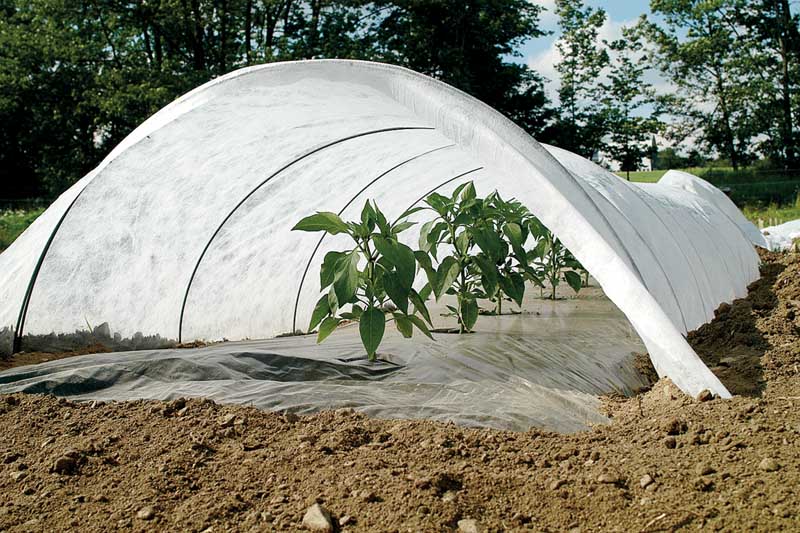
- Heat Trapping Capability: Safe plastic covers and tunnels have the ability to trap heat from the sun, creating a greenhouse effect.
- This greenhouse effect significantly increases the temperature inside the structure, providing a warm and favorable environment for plants.
- By extending the growing season, gardeners can enjoy a longer harvest period and cultivate crops that would otherwise struggle in their particular climate.
- Protection Against Unpredictable Weather: These covers act as a shield, offering protection against unpredictable weather patterns such as heavy rain, wind, or hail.
- They safeguard plants from being damaged by adverse weather conditions, ensuring their safety and well-being.
- With these covers in place, gardeners can have peace of mind knowing that their plants are well-protected, regardless of the conditions outside.
- Optimized Growing Conditions: Incorporating safe plastic covers and tunnels creates a controlled environment for plants, optimizing growing conditions.
- This controlled environment helps increase productivity and ensures the health and success of the garden.
- By providing a stable and favorable growing environment, gardeners can maximize their yield and enjoy fresh produce for longer periods.
By following these steps and utilizing safe plastic covers and tunnels in gardening practices, gardeners can extend the growing season, protect their plants from unpredictable weather, and optimize growing conditions for increased productivity and success.
Having utilized the Happybuy Greenhouse Plastic Cover extensively in my gardening endeavors, I can confidently attest to its exceptional durability and reliability. Its polyethylene material, coupled with a substantial thickness, has proven to be remarkably resistant to tears and punctures, ensuring long-lasting protection for my plants. The UV-resistant design has shielded my delicate crops from harmful sun rays, creating an optimal environment for growth and yield. While additional support may be necessary in windy conditions, overall, this cover has surpassed my expectations, providing a controlled and protective space for my garden to thrive.
- Made from durable polyethylene material for long-lasting use
- Thickness of the cover provides excellent resistance to tears and punctures
- UV-resistant design protects plants from harmful sun rays
- Provides a controlled environment for plants, promoting optimal growth and yield
- May require additional support or anchoring in windy conditions
- Limited size options compared to other greenhouse covers on the market
Maintaining and Caring for Safe Plastic Gardening Materials
When it comes to maintaining and caring for safe plastic gardening materials, there are a few key considerations to keep in mind.
- Regular Cleaning: Clean your tools after each use using mild soapy water or a garden disinfectant solution. Ensure they are completely dry before storing them.
- Proper Storage: Store plastic gardening supplies in a cool, dry place away from direct sunlight to prevent deterioration or cracking.
- Consider Stacking: For larger items like nets, pots, or containers, consider stacking them to save space and keep them organized.
- Inspect for Damage: Regularly check for signs of wear and tear, and replace damaged materials as needed.
By following these practices, you’ll maintain the longevity and effectiveness of your plastic gardening tools! 🌻🌿
The following table explain the key tips for maintaining and caring for safe plastic gardening materials:
| Plastic Gardening Material Care Tips | Description |
|---|---|
| Regular Cleaning | – Clean plastic gardening tools and containers regularly using mild soap and water to remove dirt and debris. |
| Avoid Harsh Chemicals | – Refrain from using harsh chemical cleaners that may damage or weaken the plastic. Opt for eco-friendly cleaning solutions. |
| Inspect for Wear and Damage | – Periodically check plastic items for signs of wear, cracks, or damage. Replace damaged items promptly. |
| Store in a Cool, Dry Place | – Store plastic gardening materials in a cool, dry area away from direct sunlight to prevent deterioration. |
| Protect from Extreme Temperatures | – Avoid exposing plastic items to extreme temperatures to prevent warping or distortion. |
| Use UV-Resistant Plastics Outdoors | – Choose UV-resistant plastics for outdoor gardening items to withstand sun exposure. |
| Lubricate Moving Parts | – Apply a silicone-based lubricant to moving parts of plastic tools to keep them functioning smoothly. |
Following these care tips will help ensure the longevity and safety of your plastic gardening materials. Adjust these practices based on the specific type of plastic and its intended use.
Cleaning and Sterilizing Safe Plastic Gardening Tools and Equipment
Cleaning and sterilizing your safe plastic gardening tools and equipment is an essential part of maintaining a healthy and disease-free garden. Regular cleaning helps remove dirt, debris, and potential pathogens that can be transferred from one plant to another. Additionally, sterilization ensures that any harmful microorganisms or pests are eliminated, preventing their spread and minimizing the risk of plant diseases.

- Preparation: Gather mild soap or biodegradable detergent, a soft brush or cloth, and warm water.
- Remove Dirt and Debris: Use a soft brush or cloth to remove any dirt or debris from the surface of the tools.
- Pay extra attention to crevices and hard-to-reach areas where dirt may accumulate.
- Soak in Soapy Water: Fill a container with warm water and add mild soap or biodegradable detergent.
- Place the tools in the soapy water and let them soak for a few minutes to loosen any remaining grime.
- Scrub the Surface: Gently scrub the surface of the tools with a brush, focusing on removing stubborn stains or buildup.
- Use circular motions and apply gentle pressure to effectively clean the plastic surface.
- Rinse Thoroughly: Rinse the tools thoroughly with clean water to remove any traces of soap residue.
- Ensure that all soap suds are completely washed away to prevent any residue from sticking to the tools.
- Air Dry: Allow the tools to air dry completely before storing them.
- Place the tools in a well-ventilated area and ensure they are completely dry before storing them to prevent mold or mildew growth.
- Storage: Store the clean and dry tools in a clean and dry area to prevent them from accumulating dirt or moisture.
By following these steps, you can effectively clean plastic gardening tools, ensuring they remain in good condition and ready for use whenever needed.
Storing Safe Plastic Gardening Supplies Properly
Storing safe plastic gardening supplies properly is essential for maintaining their quality and longevity. When it comes to plastic pots, containers, netting, and other gardening materials, improper storage can lead to damage and reduced effectiveness. Here are a few key tips to ensure your plastic gardening supplies remain in top-notch condition:
1. Clean and dry: Before storing any plastic gardening supplies, it is crucial to clean them thoroughly to remove any dirt, debris, or residual plant material. Use a gentle detergent or eco-friendly cleaner to avoid damaging the plastic. Once cleaned, ensure all the items are completely dry before storage to prevent mold or mildew growth.
2. Organize and protect: Proper organization is key to efficient storage. Group similar items together, such as pots and containers in one area, netting and fencing in another. Consider using stackable storage containers or shelving units to maximize space and keep items easily accessible. Additionally, protect your plastic gardening supplies from harsh environmental conditions, such as extreme temperatures or direct sunlight, by storing them in a cool, shaded area.
Remember, when storing safe plastic gardening supplies, it is essential to prioritize cleanliness, proper organization, and protection from environmental factors. By following these guidelines, you can ensure the longevity and effectiveness of your gardening materials, making them readily available for your future gardening endeavors.
Repairing and Reusing Safe Plastic Gard
Repairing and reusing safe plastic gardening materials is not only a cost-effective practice but also an environmentally friendly one. Instead of discarding damaged plastic tools and equipment, consider repairing them to extend their lifespan and minimize waste.
- Repairing Plastic Tools:
- Use plastic glue or adhesive specifically designed for repairing plastic.
- Follow the manufacturer’s instructions for the best results.
- Mend cracks or breaks in plastic tools like shovels, rakes, or watering cans.
- Reusing Plastic Containers:
- Inspect containers for damages or signs of wear before reuse.
- Clean containers thoroughly with mild soap and water to remove dirt and residue.
- Sterilize containers to prevent the spread of diseases or pests.
- Reusing plastic containers reduces the need for purchasing new ones, promoting sustainability.
Remember, taking care of your gardening tools and containers helps extend their lifespan and minimizes waste! 🌱🛠️
For more information watch the video:
FAQ
How can I evaluate the durability and longevity of safe plastic gardening materials?
You can evaluate the durability and longevity of safe plastic gardening materials by checking their thickness and density. Thicker and denser plastics are generally more durable and long-lasting.
What should I consider regarding the resistance of safe plastic gardening materials to UV rays and outdoor elements?
It is important to consider the UV resistance of safe plastic gardening materials. Look for plastics that are specifically designed to withstand prolonged exposure to sunlight and outdoor elements without deteriorating or becoming brittle.
How can I determine if a safe plastic gardening material is flexible and adaptable to different gardening needs?
To determine the flexibility and adaptability of safe plastic gardening materials, you can check their flexibility ratings or bend them slightly to see if they retain their shape. Additionally, consider the range of gardening applications the plastic material is suitable for.
What are the best types of safe plastics for raised bed construction?
Some of the best types of safe plastics for raised bed construction include food-grade HDPE (high-density polyethylene) and recycled plastics. These materials are non-toxic, durable, and resistant to rot and decay.
What should I look for when choosing safe plastic pots and containers for container gardening?
When choosing safe plastic pots and containers for container gardening, look for materials that are BP
Are there safe plastic options available for mulch and groundcovers in gardening?
Yes, there are safe plastic options available for mulch and groundcovers in gardening. Look for plastics that are specifically designed for horticultural use, such as biodegradable mulch films or recycled plastic groundcovers.
What are some safe plastic options for netting and fencing to protect plants?
Some safe plastic options for netting and fencing to protect plants include UV-stabilized polypropylene and polyethylene materials. These plastics are durable, resistant to weathering, and provide effective plant protection.
Are there safe plastic options for drip irrigation systems in gardening?
Yes, there are safe plastic options for drip irrigation systems in gardening. Look for PVC-free and BP
How can I incorporate safe plastic covers and tunnels for season extension in gardening?
To incorporate safe plastic covers and tunnels for season extension in gardening, look for materials like PVC-free polyethylene or polycarbonate. These plastics provide insulation and protection against cold temperatures, allowing for extended growing seasons.
How can I properly clean and sterilize safe plastic gardening tools and equipment?
To clean and sterilize safe plastic gardening tools and equipment, wash them with warm soapy water and rinse thoroughly. You can also use a diluted bleach solution or disinfectant wipes to ensure proper sterilization.
What is the proper way to store safe plastic gardening supplies?
Properly store safe plastic gardening supplies by keeping them in a cool, dry place away from direct sunlight. Avoid stacking heavy items on top of each other and make sure to organize them in a way that prevents damage or deformation.
How can I repair and reuse safe plastic gardening materials?
To repair and reuse safe plastic gardening materials, you can use adhesive or plastic welding techniques to mend any cracks or breaks. Additionally, consider repurposing plastic containers or materials for different gardening projects.

Studied Agricultural Engineering-Plant Protection at University of California, Davis.
Head of Content writing team at Southelmontehydroponics.com

